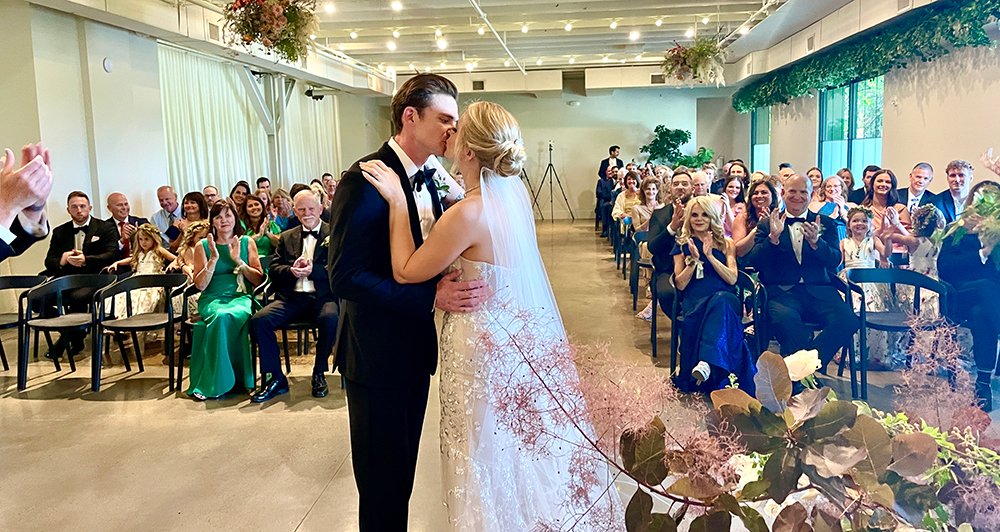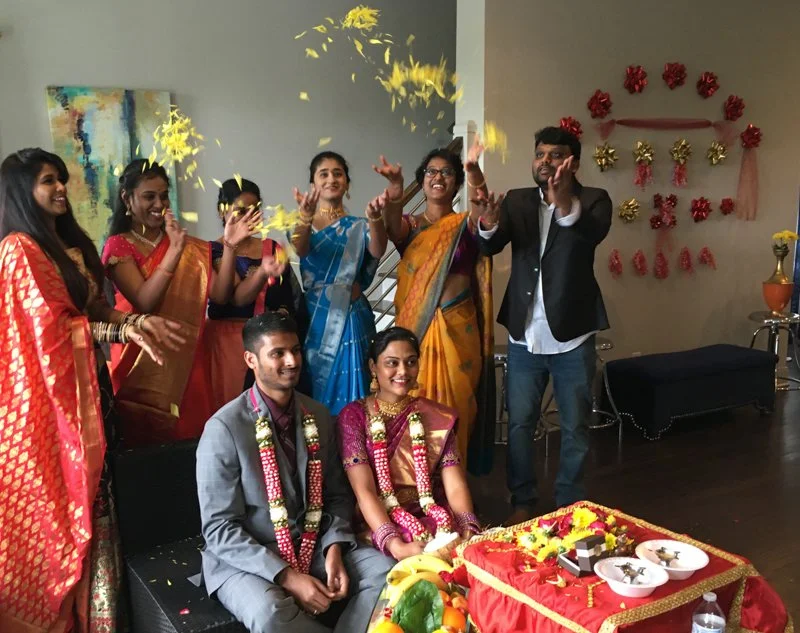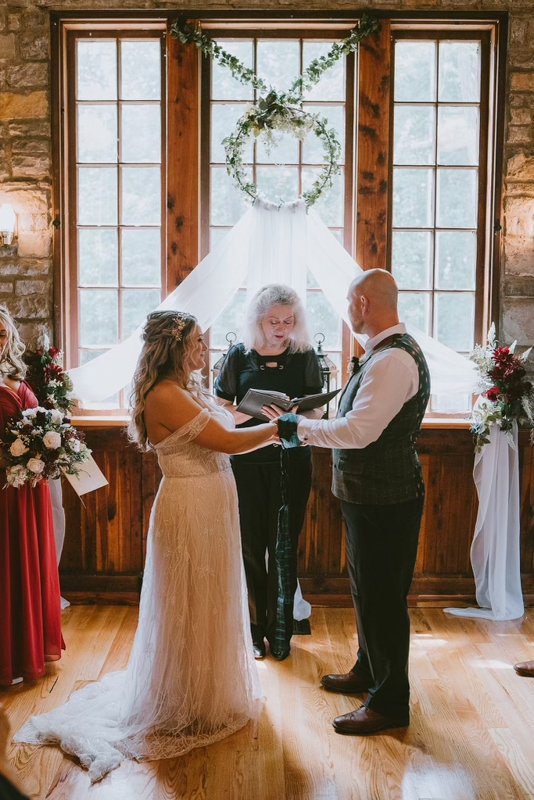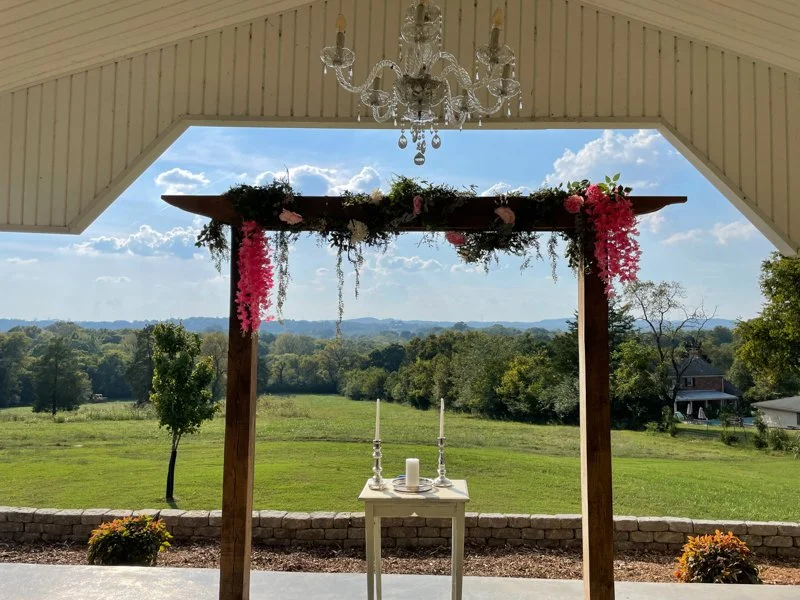Wedding Rituals and Traditions from Around the World (and How to Create Your Own)
No matter how big or small, your wedding or elopement is an important moment. Throughout time and across the globe, people have marked these special moments with rituals and traditions meant to bring good fortune to the new union. Adding a special ritual to your wedding can be an opportunity to celebrate your culture or family, symbolically mark start of a new chapter in your lives, or add an individual touch to your ceremony that celebrates your unique relationship.
Below, we look at wedding rituals from around the world, including a number of recently created or reinvented secular practices to add meaning to your ceremony regardless of your culture or creed.
Cultural and Religious Traditions
Jumping the Broom (African-American tradition)
The tradition of jumping the broom has deep and debated roots in Africa, Europe, and the United States. In some West African cultures, a special handcrafted broom was waved around the couple to ward off evil spirits before being placed before them to jump over as they left the ceremony. In Wales, Ireland, and the Romani people of the British Isles, jumping a broom similarly symbolized the forming of a union - particularly for communities whose marriages were not recognized by the church or government. Whether it was brought from West Africa or Europe - or both - jumping the broom became an important ritual for enslaved persons in the American South whose weddings were not legally recognized. Today, many African-American couples choose to jump the broom at the end of their ceremony to symbolize the start of their new lives together and honor their ancestors.
If you’re planning a broom jumping ceremony, you may want to plan to buy or make a special keepsake broom that can be passed down for generations. Jumping brooms are usually shorter than a standard kitchen broom and are often handmade and decorated with ribbons, lace, flowers, or Cowry shells. The broom is usually placed in front of the couple by a member of the wedding party at the close of the ceremony. You can have your guests count to three before you and your partner jump, hand in hand and eyes closed, or you can incorporate a prayer, poem, or song.
Circling the Groom (or Bride) (Jewish tradition)
Called hakafot in Hebrew, the circling of the groom by the bride is a traditional part of Ashkenazi weddings. Performed before the official start of the ceremony, the bride will circle the groom counterclockwise seven or sometimes three times underneath the chuppah. This ritual is meant to symbolize the wall of love and protection around the new couple. The number seven has particular importance as both the number of days in which God created the Earth.
While the tradition may have originated with the bride circling the groom, many couples choose to circle each other to represent equality in their relationship. Some choose to each take a turn circling seven times, but many decide instead to each circle the other three times and do the final, seventh circle together.
Breaking the Glass (Jewish tradition)
Breaking the glass is perhaps the most well known Jewish wedding ritual. At the end of the ceremony just before the couple kiss, the groom smashes a glass (either wrapped in a napkin or in a cloth bag for safety) with his right foot accompanied by joyous shouts of “Mazel tov!” from the wedding guests, which means “good luck has occurred”.
The most popular origin of this tradition is that it is meant to represent the destruction of the Temple of Jerusalem, but many couples assign additional meaning to the ritual. Some say it represents the last time the groom will get to put his foot down in the relationship or that it represents that marriage comes with hard times as well as good.
Some couples choose to purchase a specially made glass that comes with a pouch. Others opt for an incandescent lightbulb due to louder sound and ease with which it can be safely broken. After the wedding, some couples have their broken glass made into an art piece by a specialized artisan.
Tea Ceremony (Chinese tradition)
Tea ceremonies have their roots in the Tang dynasty (618-907 CE) and are an iconic and meaningful part of Chinese weddings. Similar ceremonies also appear in Vietnamese and Japanese traditions. Before the wedding - often the day-of - the engaged couple will serve tea to their parents, grandparents, and elder family members. The ritual marks the official joining of the families and allows the couple to show their respect and gratitude to their families. Historically, there would be a separate ceremony for the bride and grooms respective families, but most couples now choose to host both families at one ceremony.
In a traditional tea ceremony, the engaged couple kneels in front of their family with the bride on the left and the groom on the right for heterosexual couples, though this rule isn’t hard and fast. While there’s no particular type of tea that’s used in the ceremony, a traditional tea set and kneeling pillows are generally used. After family have been served (usually parents or grandparents first), the family often gives the couple lucky red envelopes (hóngbāo in Mandarin or lai see in Cantonese) filled with gifts of money or gold bridal jewelry. There are many more aspects of etiquette than we can cover in this article, but luckily the couple usually has their bridal party with them to help the ceremony go off without a hitch.
El Lazo (Mexican, Filipino, and Latin American tradition)
El lazo (the lasso) is a popular wedding ritual in throughout Latin America, notable Mexico, and the Philippines. Most commonly seen at Catholic weddings, the lasso is typically an oversized rosary, cord, or garland of flowers that is draped around the couple after they have said their vows but before the end of the ceremony. The lasso is looped around the couple in a figure eight or infinity symbol, representing new beginnings and an everlasting union.
In many services, el lazo is purchased and placed over the couple’s shoulders by their wedding sponsors (los padrinos y madrinas). Many couples keep their lasso as a wedding keepsake, some even using their rosary to pray together. An heirloom lasso can be the something old or borrowed in your wedding or a family member’s future wedding.
Ring Warming (Irish tradition)
Although it traces its origins to Ireland, ring warming has becoming popular across the globe in both secular and religious ceremonies. Either before or during the ceremony, guests are asked to hold the couple’s rings and offer a silent wish, blessing, or prayer for the marriage before passing the rings to the next person.
Whether you pass the rings through the guests during the ceremony or have them available before hand for attendees to bless, you’ll need a trusted guest or member of the wedding party to make sure the rings arrive safely to the altar. Keeping the rings tied together on a pillow or dish is a great way to make sure they stay secure.
Foot washing (Christian tradition)
Rooted in Christian tradition, foot washing is a symbol of love and service. The practice references Jesus’ washing of his disciples feet at the Last Supper. Some couples choose to incorporate this into their ceremony, taking turns sitting to have their feet washed by their partner. For others, the moment is too intimate to be shared so publicly (and the logistics of getting a basin of water and chair up to the altar may not be practical for your venue). Many couples perform their foot washing ritual before the ceremony during their first look or after the recessional before they join their guests at the reception.
Sky Lanterns (throughout Asia, Portugal, and South America)
Although their first recorded use is in China, sky lanterns or wish lanterns have become a part of festivals throughout Asia. They even made their way to South America via Portuguese colonists who likely brought them from China. These miniature hot air balloons are made of paper and are made buoyant by a small flame.
During wedding ceremonies, sky lanterns are often used as a unity ritual performed during the reception. Some couples release a lantern together, each release their own, or invite their guests to participate by releasing lanterns of their own.
Before you decide to perform a sky lantern ceremony of your own, take a moment to check your local laws and consider the environmental impact. These lanterns have been made illegal in many parts of the world due to the risk of fire, harm to wildlife who might consume the resulting litter, and danger to aircraft. In 2013, a sky lantern resulted in a fire that did £6 million of damage when it landed on a recycling plant in Smethwick, UK. All that to say, this may not be the ritual for you if you are hosting an intentionally eco-friendly event or live in a fire-prone area.
Stefana (Greek tradition)
Stefana are an important part of Greek Orthodox wedding ceremonies. The thin circlets symbolize the couple becoming the king and queen of their new family with the blessing of God. Similar to el lazo, these white crowns joined by a ribbon or string are placed on the bride and groom by their wedding sponsors (koumbaros). The koumbaros exchange the crowns between the heads of the couple three times.
While they don’t need to be decorated (the only important thing is that they are primarily white or off-white), many couples choose to have their stefana customized. Custom stefana can be purchased from specialized craftspeople or made yourself. Unlike el lazo, stefana are not usually passed down as heirlooms. Traditionally, stefana are buried with the couple when they pass or disposed of in the event of a divorce.
Indian Traditions
Indian weddings are known for being beautiful and elaborate affairs, often lasting several days. These multi-part celebrations include many more meaningful traditions that deserve an article of their own, but we wanted to touch on a few below.
Mehndi Ceremony (Indian tradition)
Many Indian brides participate in a mehndi ceremony prior to their wedding day, often the night before. Mehndi (henna) is applied to the bride’s hands and feet in intricate floral designs which can take multiple hours to complete. The mehndi ceremony is attended exclusively by the bride’s close female family members and friends and is chance to bond and relax.
The bride will sometimes have her and partner’s names hidden in the henna for her new partner to try to find later. The color of the henna is also said to have significance; the darker the henna, the better the marriage will be and the more the mother-in-law will like her new daughter-in-law.
Haldi Ceremony
The morning of the wedding, the bride and groom are anointed with haldi, a paste of turmeric, sandalwood, and rosewater. The paste was traditionally meant to soothe pre-wedding nerves and beautify the couple. In this occasionally messy ceremony, family members apply the yellow haldi to the bride and groom. Traditionally, the bride and groom had separate ceremonies, but today some couples choose to have a joint ceremony.
Baraat
Most Indian weddings begin with the groom processing to the altar with his family, either on a white horse or the soldiers of his friends. This ceremony is called baraat. The grooms guests will join in the joyful march towards the mandap, accompanied by music and dancing. Once the procession reaches the altar, they’re greeted by the bride’s family and await the arrival of the bride.
Mangalsutra
Towards the end of the wedding ceremony under the mandap (a decorated structure under which the marriage sacrament takes place), the groom will tie a mangalsutra around the bride’s neck. The mangalsutra is a necklace usually made of gold and black beads that represents the couple’s commitment to each other and the bride’s new status as a married woman, similar to a wedding ring. The color and design of the mangalsutra varies by region.
Secular Rituals
Handfasting
Originally meant to mark a betrothal, this Celtic tradition has become a popular wedding ritual in secular and spiritual weddings alike. The couple’s hands are bound together by a cord or ribbon, either by the officiant or chosen friends or family members, to represent the joining on of their lives.
There are many ways to personalize a handfasting, from how you and your partner hold hands to how many and what kind of cords are used to bind your hands together. While you can use any ribbon or cord, you might choose a piece of heirloom fabric, a ribbon for each of your children, a ribbon in a color that holds meaning to you, or purchase or create a special handfasting cord to take home as a keepsake. While couples in the 17th century might have stayed tied together until midnight, modern couples usually choose to slip their hands from the binding without untying the knot at the end of the ceremony to allow for dancing, eating, and socializing with guests.
Prince William and Kate included a handfasting ritual in their 2011 wedding. A yellow-gold satin sash was draped and wrapped over the bride’s and groom’s hands, and interestingly there was not a ring for the groom, only the bride had a wedding ring.
Unity Candles
Unity Candle ceremonies have become increasingly popular over the last several decades. Like many of the traditions on this list, the lighting of the Unity Candle symbolizes the joining of both the couple and their families. This ritual usually takes place after the couple exchange their vows.
Traditionally, the mother of each partner will light a small taper candle which the couple will use to light a central pillar candle together. Of course, any parent or family member (biological or chosen) - or even the couple themselves - can light the tapers. What’s important is that the ritual is meaningful to you and your partner.
Burning Ritual
Into a large bowl that holds a fire the couple each take turns to burn a piece of paper on which they have written a list of their deep fears and regrets, their negative thoughts and habits, their old traumas and old selves. By dropping this paper into the fire, they will powerfully release what no longer serves them, consumed by the fire of love. The paper is held over the flame till it has completely burned to ash. They can then release the ashes as a symbol of letting go. Some couples choose to add a Burning ritual to a Unity Candle ritual where the larger Unity Candle is placed in a large bowl ready for the burning.
Mixing of Sand
Similar to the Unity Candle, the mixing of sand is a more modern tradition that symbolizes the commingling of the newlyweds’ lives. The couple will each pour a vial of sand into a central container.
While many couples choose different colored sands to create a strong visual effect, using sand from locations that are significant to you is another popular option that can add meaning to your ritual. If you have children, especially if you’re blending families, you may want to include them in this ceremony with their own vials of sand to pour into the central container.
Planting a Sapling or Potted Plant
Planting a sapling or potted plant together is a beautiful way to symbolize both the beginning of your life as a married couple and how your love will grow as the years go on. Some couples will include earth from their respective homes or places that are special to them in the pot or hole the sapling will be planted in. Couples may choose to each add water to their plant in the ritual. The ideal size is a small seedling plant in a tiny pot that won’t cause too much mess.
Whether you choose to plant a tree or a potted plant will depend on your venue and your comfort with mess. In general, it’s recommended to save a ritual like this for an outdoor wedding where spilling some dirt won’t matter too much.
Create a Time Capsule
A wedding time capsule is a beautiful way to celebrate your love for years after your actual ceremony. What you put in your time capsule is up to you, though love letters and alcohol are popular options. Other items you might include are mementos from your ceremony, poetry, copies of your vows, or a CD of your wedding playlist. You can even get guests involved by asking them to write letters to you and your partner to be read at milestone anniversaries or memories of your relationship.
Many couples will choose to open their capsule on their first anniversary, but you can pick any date - or multiple. Some couples choose to open it after their first big fight, others when they hit life milestones like the birth of a child or significant anniversary. One important thing to note is that, unlike the classic 80’s high school project, wedding time capsules are rarely if ever buried.
Create Your Own Ritual
Every tradition was a new once. If none of the rituals on this list resonates with you, you can always create your own. Whether you both love music, art, or sports, incorporating something special to you and your partner is a great jumping-off point to design your own ceremony.
Now’s the Time to Book Your Wedding!
Whether you incorporate one of these rituals into your special day or create your own, we hope your wedding is full of love and joy! However you decide to celebrate, you’ll need a great officiant. Get in touch with Zelda, an award-winning Nashville wedding officiant, to book your wedding of any size or learn more about our services.










